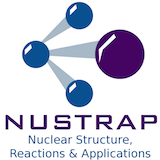Fundamental scientific knowedge is typically desired to offer back to society. In our modern times, applications of fundamental science exist in every day's life, industry, medicine, environment, materials and many other fields. When NuSTRAP Collaboration was formed, a central motivation was to advance the field of radiation applications joining forces from different scientific specialties. In that direction, there is a large portion of our joint work towards studies using gamma and X-ray radiation.
In more detail:
X-rays have been a powerful tool for analytical purposes and several important techniques have been developed in the 20th century. Techniques such as X-Ray Fluorescence (XRF), X-ray Diffraction (XRD) and Proton-Induced X-ray Emission (PIXE) have played a fundamental role in understanding our microcosmos from the DNA helix to Earth's inner crush content. We use a combination of X-ray techniques provided by synchrotron in micrometer-dimension beams. The state-of-the-art instruments within the synchrotron facilities (i.e. wigglers and undulators) make the detailed studies of elemental composition, chemical speciation, nanoclustering, and toxicity possible at nanoscale.
Recent studies with advanced spectroscopic techniques (μ-XRF, μ-XRF, μ-XANES, μ-XAFS) focused on environmental studies, geochemistry, volcanology, atmospheric pollution and nuclear waste. There is a currently a running research program at ANKA facility at KIT. Several of our results have been published and highlighted.
Moving deeper in structure and increasing the energy scale, γ rays are there to signify their usefullness in applied studies. A major weapon in studying environmental pollution from nuclear accidents (i.e. Chernobyl, Fukushima), distribution of nuclear waste, radiochronology etc, γ rays are a powerful tool in our hands. Each γ ray has a unique energy, thus it can be a distinct beacon in case we are looking for radiation signatures in environmental samples or "just proper" in medical diagnosis and treatment.
As Greece was directly affected by the Chernobyl accident some 30 years ago, radiation levels in the environment offer an ideal playgroung of applications of γ radiation. Moreover, tracing its cycle in nature provides information and is related to the physicochemical and geochemical nature of soils, sediments and waters. NuSTRAP members have a long experience in such issues with a well established record in publication journals and international conferences.
